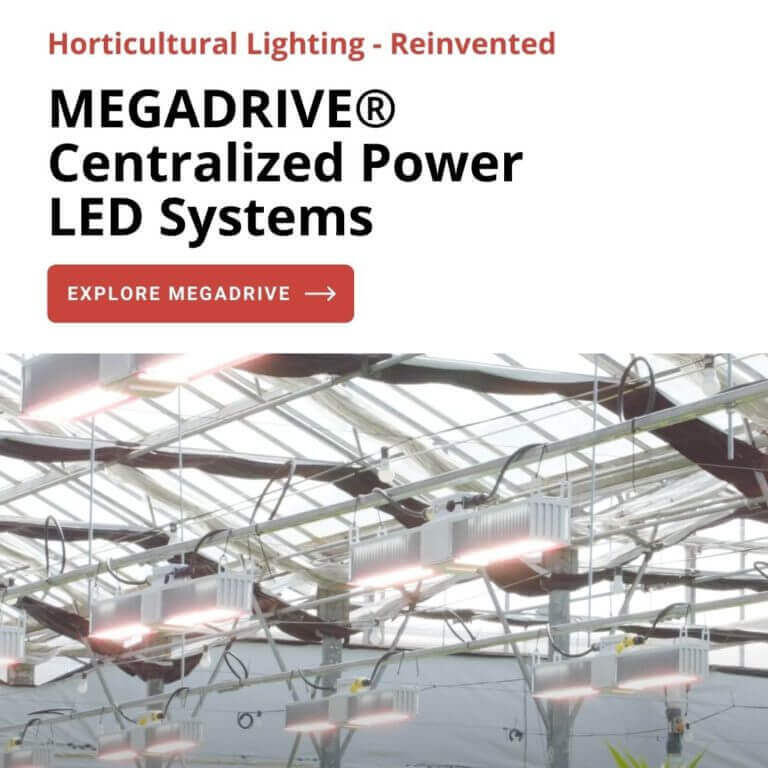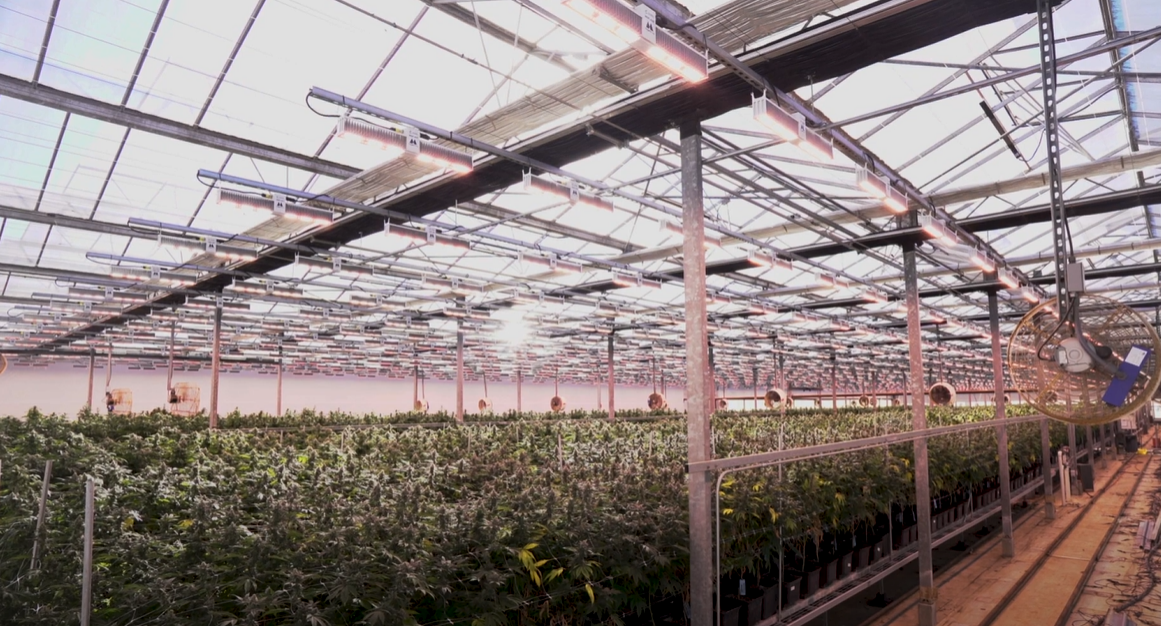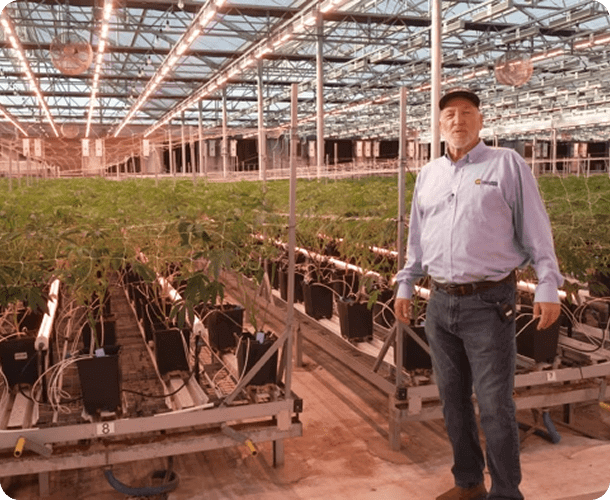Your greenhouse electrical design should consider not just your immediate needs, but also long-term goals. You need to be equipped for expansion—if that’s your dream. And you want to be ready to take advantage of any energy-saving opportunities. Above all, your greenhouse electrical design must serve your greatest goal:
Cultivating a robust crop through well-selected lighting and environmental controls.
In other words, you need to think of everything before settling on a final greenhouse electrical design. It will take work, time, and research. But the effort you put in today will pay off in the long run.
In the interest of helping you get started, here are the most essential greenhouse electrical design considerations.
#1: Are Your Electrician and Design Engineer Qualified to Create a Greenhouse Electrical Design?
Different electricians have different specialties. Make sure the professional you work with has experience working with agricultural facilities. Ideally, they’re familiar with greenhouses specifically.
The same goes for a design engineer. We do recommend you do your own research, so you’re equipped to oversee your greenhouse electrical design intelligently. But even with a little extra education, you still need an engineer who can bring significant insight to the design process.
Electricians and engineers who understand greenhouse design can help you anticipate and address common challenges. They know how to supply the amount of power you need to the right areas as safely and as efficiently as possible. Finally, make sure your electrician and engineer adhere to National Electrical Codes and any local codes.
#2: Have You Considered Your Demand Load Thoroughly?
Demand load refers to the total power you need to power your greenhouse. Some considerations that affect your demand load are obvious. Others are not. Take the time to discuss your current needs and long-term goals with your design engineer.
Be especially careful to consider these three elements.
Greenhouse Equipment
Create a load schedule. A load schedule is a comprehensive list of all electrical equipment needed to operate your greenhouse.
Your load schedule should include everything, from your water pumps to your automated roof vents. Ventilation and supplemental grow lighting will probably account for a sizable portion of your electrical usage.
One way to ease the power demands of your equipment is to use premium LED greenhouse lights. Lights like the California LightWorks GH Pro 340 consume significantly less energy than HPS bulbs. They also emit less heat, which helps you save on cooling costs. And finally, significant rebates may be available from your local utility provider.
Greenhouse Size
This probably goes without saying, but let’s say it anyway. If you have a bigger greenhouse, you’re going to have a bigger demand load.
You and your design engineer will likely discuss single-phase or three-phase electrical power early in the design process. If you have a small operation and you plan to keep it small, you might choose single-phase.
Otherwise, three-phase power is a great option. Three-phase power allows you to secure a high voltage, which in turn minimizes voltage drops. This option also offers more flexibility when it comes to lowering installation costs, increasing efficiency, and expanding your operation.
However, it should be noted that three-phase electrical power is not always available.
Expansion
If you have dreams of long-term expansion, think about them now. Make sure your greenhouse electrical design considers not only the amount of power you need now, but how much you’ll need in the future.
Get your electrical design engineer on the same page. He or she will also need to ensure you have enough room for additional circuits on your main panels and subpanels.
Any details you neglect today could turn into major expenses later on.
#3: Does Your Greenhouse Electrical Design Account for Emergencies?
Talk to your electrician about backup power. How will you be prepared in the event of an outage?
Your electrician will most likely want to know the exact equipment you must be able to run in an emergency. Based on this information, he or she will determine what size generator you migth need.
Give this matter some serious thought and be specific about your priorities. Resist the temptation to just go for the biggest generator to make sure you’re covered. When your generator is larger than what you need, you’re likely to find that it operates with less efficiency. And you wind up spending far more money than you should.
#4: Where Would You Like Your Electrical Wires?
How do you want your electrical wires to get into the greenhouse? You have two options.
- You can bring the wires in overhead.
- Ask your electrician for below-ground wiring.
Some of this may depend on factors that are out of your hands, such as the location of the utility pole. The main point of entry for the electric service is another notable factor. Assuming you actually have a real choice here, there are pros and cons for both options.
Overhead wiring is more cost effective in the here and now. If you go underground, you have to pay to bury the wires. On the other hand, underground wiring often gives you more options if you plan to expand. You may be able to expand over buried wires, but it is nearly impossible to expand under existing wires.
As a grower, you also want to consider the potential shadowing effect of poorly placed wires. The same is true for all aspects of your greenhouse electrical design, including the placement of electrical panels.
#5: Have You Considered the Environment of Your Greenhouse?
This is another reason to secure an electrician who has direct greenhouse experience. Romex flexible wire is a common option for residences, but the jackets cannot withstand UV rays.
The same degradation happens to PVC conduit, a common component that also sags in high heat. Clearly, neither of these options will work for your greenhouse electrical design.
An electrician who specializes in greenhouse design should already know to consider these things. Regardless, it’s your job as the greenhouse grower to be crystal clear about the environment inside your greenhouse.
Determine what temperature you need to maintain. Be clear on your expected humidity levels. Discuss your irrigation system with your design engineer. And determine what type of supplemental lighting you plan to use.
All these details help your electrician select the safest and most durable equipment for your greenhouse.
#6: Bonus Tip: Select Greenhouse Lighting That Simplifies Your Design
Your supplemental grow lights represent an interesting challenge as you create your greenhouse design.
You can’t skip supplemental lighting, because without it, you’re at the mercy of the seasons and climate. But your grow lights can complicate your greenhouse electrical design. Some lights consume a lot of energy, require thousands of power drops, and cast shade on your plants.
To avoid these struggles, look for a premium LED grow light designed specifically for greenhouse applications. LEDs are famously more efficient than HPS bulbs. They also provide superior light quality.
And greenhouse-specific LEDs like our GH Pro 340 are designed to minimize shadowing thanks to ultra-slim housing. Plus, these lamps come with wireless digital spectrum control, automatic dimming, and simplified installation. With integrated drivers and the fact that you can piggy back up to ten light fixtures on a single power drop, your installation cost is greatly reduced.
If you’d like to learn more about our greenhouse lights, contact us today to request a free greenhouse lighting plan with no obligation.





